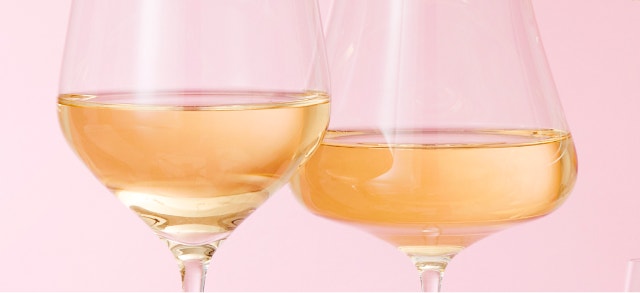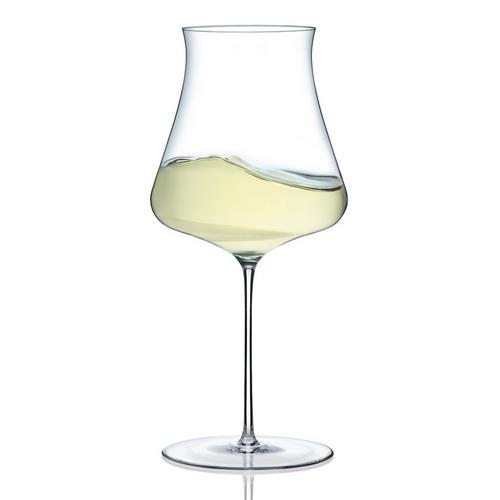Wine Enthusiast |
| The Making of a 100-Point Wine: Return to Greatness in Saint-Émilion Posted: 02 Jul 2021 04:30 AM PDT  To taste the wines of Saint-Émilion is to meet two series of sensations. One is the richness, the concentration, and sometimes the alcohol, provided by Merlot. The other is the more nuanced, perfumed, structured character from Cabernet Franc. The proportion of each in the blend determines the stylistic character of the wine and its balance. And then there's Château Figeac. A Premier Grand Cru Classé, one of the top wines of Saint-Émilion, this estate brings another grape into play: Cabernet Sauvignon, which can form one-third of the blend.  When you blind-taste wines from top Saint-Émilion estates, it's sometimes easy to spot Figeac for its extra dimension of structure or its initial austerity. Other times, it's not possible. When I tasted along a line of 2018 Saint-Émilion Premier Grand Cru Classé, Figeac did stand out, but for once not just because of the Cabernet Sauvignon. It was because there was such extraordinary harmony shining through the wine's tannins and still-young fruit. It did have the richness of the 2018 vintage, and it did have the alcohol, thanks to the ripeness of the Merlot. But it was what I described as its "density and immense structure" that set it apart from the other wines.  Figeac is an estate that has always made great Saint-Émilion. But it was in a traditional style, one that appealed to a faithful clientele. The château seemed to be marking time. In 2012, the shock of not being reclassified from Premier Grand Cru Classé B to the exalted level of Premier Grand Cru Classé A energized owner Marie-France Manoncourt to change direction. This seemingly arcane distinction is of major importance in Saint-Émilion. Manoncourt called in consultant Michel Rolland and appointed Frédéric Faye as managing director. This decision paid off in the quality, precision and intensity of the last several vintages, all without sacrificing the style that makes Figeac so special. It's not as if the vineyard has changed. The gravel ridges that make it so advantageous for Cabernet Sauvignon are still there. But the viticultural tweaks, and the definition and vinification of separate parcels, made the difference between very good and superlative.
So we come to 2018, the most recent vintage released. With a blend of 37% Merlot, 33% Cabernet Sauvignon and 30% Cabernet Franc, it's "one of the great vintages of Figeac," says winemaker Frédéric Faye. He describes the challenge of "finding the individual characteristics of each variety and integrating them together." Why is it such a great wine? Because of the integration of the three grape varieties in a way where none stands out, but everyone contributes. Because of the way that the wine is already integrated, but that also promises so much for the future. It's a wine that perfectly encapsulates the character and the greatness of Figeac. This is a 100-point wine. |
| These Five Large-Format Wines are Big on Flavor Posted: 02 Jul 2021 04:00 AM PDT  What better way to celebrate the joys of summer than with party bottles, or large-format wines? These 1500 mL (or liter) bottles offer two major benefits: they are the perfect aging vessel for long-term storage in your collection, but also equal to two bottles of wine, which is more than enough for sharing in a celebratory tipple. Try out these five large format bottles from Austria and Germany to toast the reemergence of the world with some big flavor. Hugl-Wimmer 2018 Zweigelt (Niederösterreich); $13, 89 points. The nose is shy at first but, with some air, reveals juicy cherry notes. The palate is easy but juicy, fresh and packed with ripe vivid cherry. It’s almost like fruit juice for adults, but with a lovely balance and dry finish. Kysela Père et Fils. Best Buy. —Anne Krebiehl MW Adolf & Heinrich Fuchs 2019 Skeleton Grüner Veltliner (Burgenland); $10, 88 points. Green-pear freshness on the nose is immediate, and a little more air adds riper notions of yellow pear, too. The palate is light, bright fresh but also has a gentle creaminess. This is easy, totally refreshing and dry. Multiple U.S. importers. Best Buy. —A.K. Weingut Binz 2018 Nackenheimer Trocken- Dry Estate Bottled Riesling (Rheinhessen); $14, 88 points. There’s a cooling, river-rock minerality that exudes from this light-bodied but fully dry Riesling. The palate offers firm strikes of stone and steel, but also a zippy edge of lime and white grapefruit. A racy white that would accompany raw oysters or other seafood quite well. Drink now–2024. Winesellers, Ltd. —Anna Lee C. Iijima Weinhof Thomas Stopfer 2019 Zweigelt Rosé (Niederösterreich); $20, 88 points. Just a hint of ripe strawberry strafes the nose. The palate shows more fruit, with soft hints of strawberry and lemon on a slight, light but fresh palate. The finish is dry and fresh. All Star Imports, LLC. —A.K.
Köster-Wolf 2019 Trocken Riesling (Rheinhessen); $21, 87 points. Notes of greengage plum and crisp green apple abound in this light-bodied, dry-style Riesling. It’s a brisk, easy-drinking white that finishes on a bracing hit of lime zest. A good value for a one-liter wine with broad appeal. Artisans & Vines. —A.I. |
| You are subscribed to email updates from Wine Enthusiast. To stop receiving these emails, you may unsubscribe now. | Email delivery powered by Google |
| Google, 1600 Amphitheatre Parkway, Mountain View, CA 94043, United States | |


















0 comments:
Post a Comment